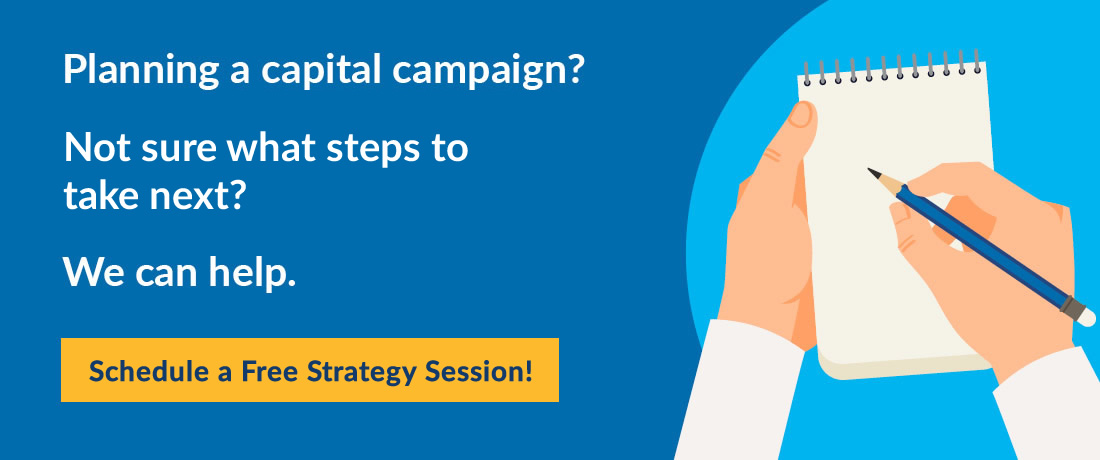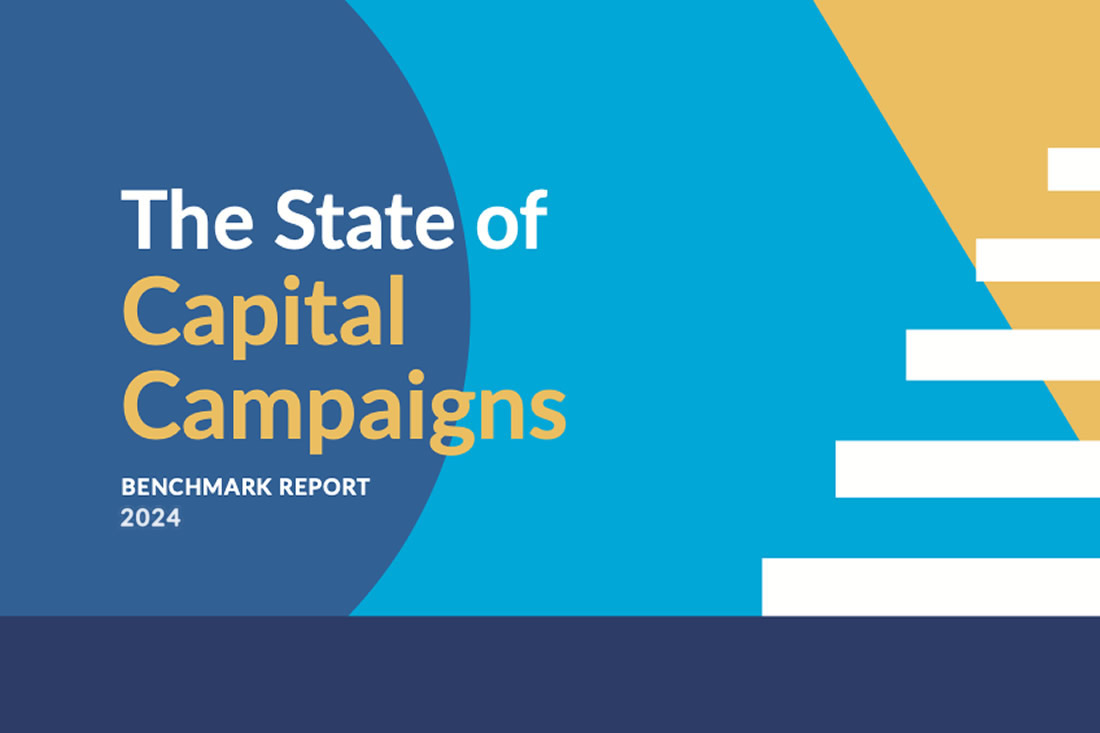Top 5 Capital Campaign Mistakes, Plus Lessons Learned

Capital campaigns can be challenging and stressful — but they don’t have to be.
With proper planning and execution, capital campaigns are the most effective way for you to add some rocket fuel to your fundraising and jet-propel your organization to new heights.
Sadly, many Executive Directors and board members feel they can “get by” or make it up as they go along. And in doing so, they make pivotal mistakes along the way, undercutting the success of their campaign.
We urge you to learn from their mistakes.
5 Lessons Learned from Common Capital Campaign Mistakes
Here are five capital campaign mistakes that some of our clients have made before we helped them right the ship. Keep these lessons in mind as your organization begins the campaign planning process.
1. Acknowledge what you don’t know, and hire help.
Capital campaigns are fundraising beasts unto themselves. If you don’t know the strategy behind them, they are difficult to manage and execute. If you lack a number of staff members who have been through multiple campaigns from start to finish, you probably need some additional (outside) expertise.
Development Directors almost always advocate for bringing in outside expertise because they know what they don’t know. Unfortunately, they’re often up against resistant Executive Directors and board members.
This is not the time to be penny-wise and pound-foolish. It’s important to invest in expertise so you’re more likely to set your campaign up from the start and succeed.
We hear from nonprofit leaders every day who “tried it on their own” and now are “stuck” after raising 60% of their goal and they struggle with what to do next.
2. Successful campaigns have a compelling vision and case for support.
A big, clear vision and a compelling case for support are the foundation of any successful capital campaign.
Your case must articulate:
- the need for the campaign
- the specific project or initiative that will be supported
- and the impact your campaign will have
This does not mean a fancy brochure; rather, simply a well-thought-out vision for your organization and rationale for the campaign.
Your campaign’s case should be based on your organization’s strategic plan, research and data (when appropriate), and how your organization will serve the community in the future.
It’s equally important to craft a compelling story that will inspire donors to give and to communicate it effectively through all your communications channels.
3. Involve key stakeholders early on.
Involve key stakeholders early in the planning process to ensure that everyone is on the same page. You want to know in advance that the campaign has the support it needs to be successful.
Key stakeholders often include:
- board members
- staff
- volunteers
- other key stakeholders through a Guided Feasibility Study process
Engaging these individuals early on will help to build momentum and create a sense of ownership and investment in the campaign.
This is the primary reason to do a feasibility study, which is the first real opportunity to involve early stakeholders in a formal way. Take it even further by doing a Guided Feasibility Study, where your leaders are conducting the interviews, rather than outsourcing them to a consultant.
Organizations that skip feasibility studies miss a critical opportunity to engage donors early.
Not only that, but those campaigns also begin without any information or data from their biggest potential supporters. It’s like putting on a blindfold, picking a direction, and hoping you get to your destination.
4. Set an aspirational goal that is grounded in data.
Your campaign goal should be aspirational and grounded in facts. Your goal should never be an arbitrary amount — it should be based on your campaign objectives.
For example: an arbitrary goal is $25 Million because it’s our 25th anniversary
That is not an appropriate campaign goal. It doesn’t have anything to do with what your organization actually needs.
Your goal should be tied directly to a plan for how the funds will be used.
In other words, your building costs $3 million, plus it will cost an additional $1.5 million to run the programs and services in that new building for the first three years. Plus $2 Million in endowment that will generate five scholarships each year. Be specific.
It’s important to be specific with your goal so donors know exactly what you need and why.
Your goal should also be lofty and aspirational. That way, your donors can get inspired and share your excitement about making a positive impact.
5. Hire more staff to assist with your campaign.
It’s unrealistic to expect your current staff to take on what’s essentially another full-time job of managing and running the campaign. If you expect to double, triple, or even ten-times your fundraising revenue, you will need more hands-on deck.
This is not simply a capital campaign consultant to provide expertise and strategy, but also in-house staff to help with the inevitable additional tasks and responsibilities that come along with campaigns.
There are many different staffing needs to consider. Regardless of what other types of support you hire, it’s very likely that you’ll need more administrative support.
Do not plan to start a campaign without first staffing up.
You Can Avoid these Common Capital Campaign Mistakes
As campaign experts and advisors, we come up against these issues time and time again. We hear from Executive Directors who are stuck, mid-campaign, because they didn’t do the proper planning necessary to ensure their campaign would be successful.
Capital campaigns are not about luck — they are based on good strategy, proper planning, and diligent execution. The stakes are high, and you should do everything in your power to ensure success.
And remember – you don’t have to be alone in this process. We’re here to help!




Leave a Comment